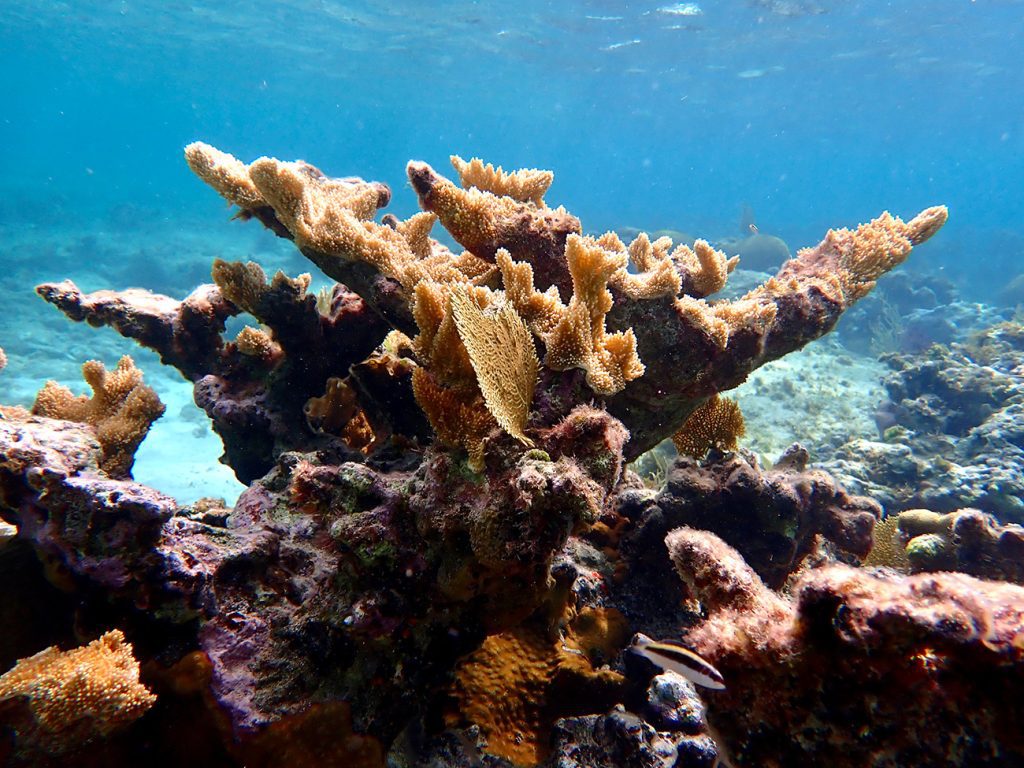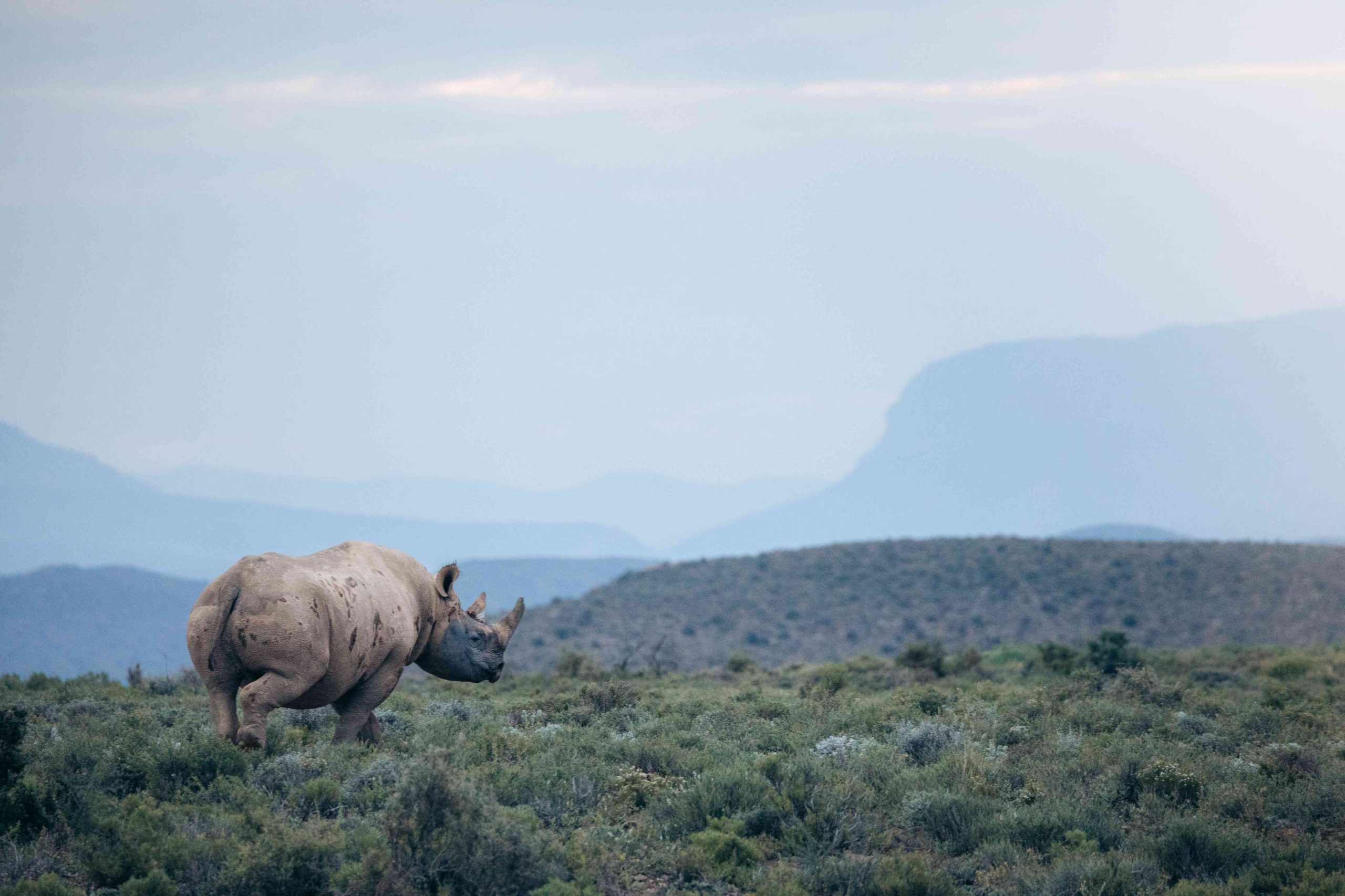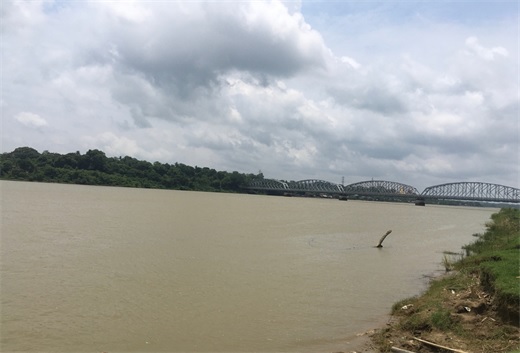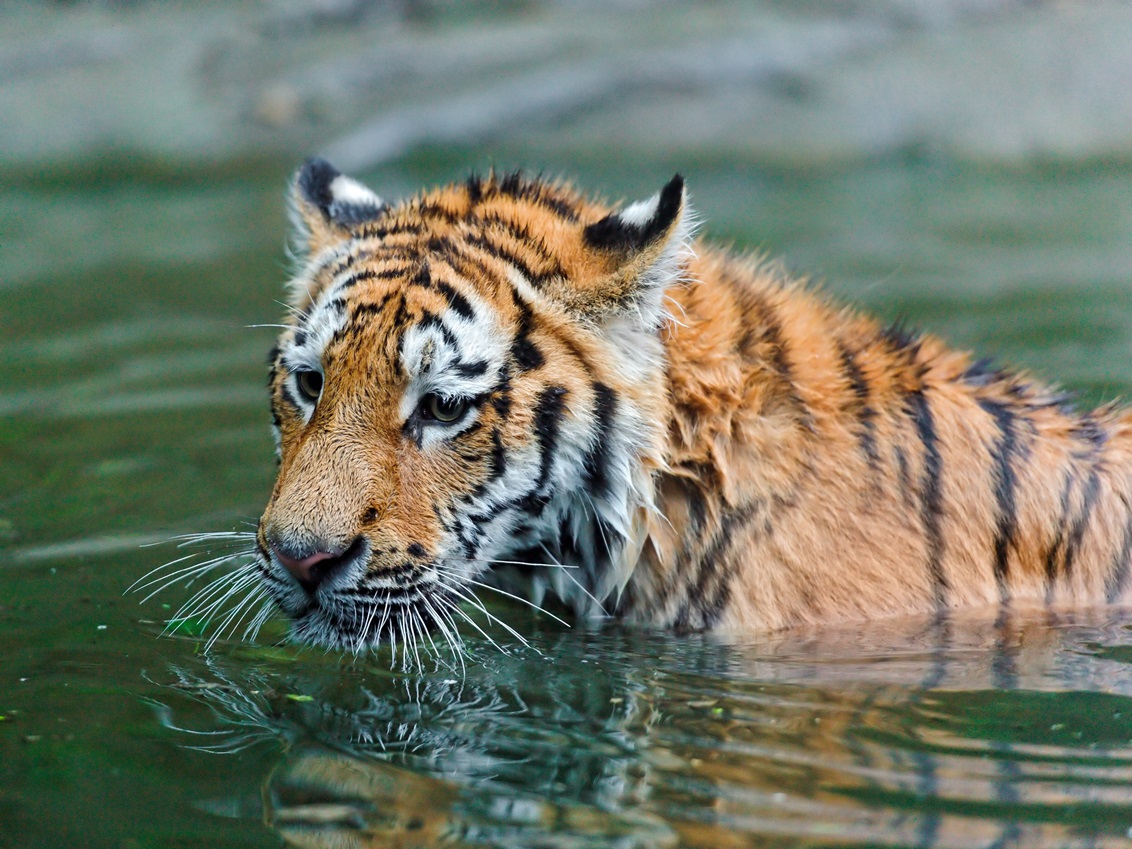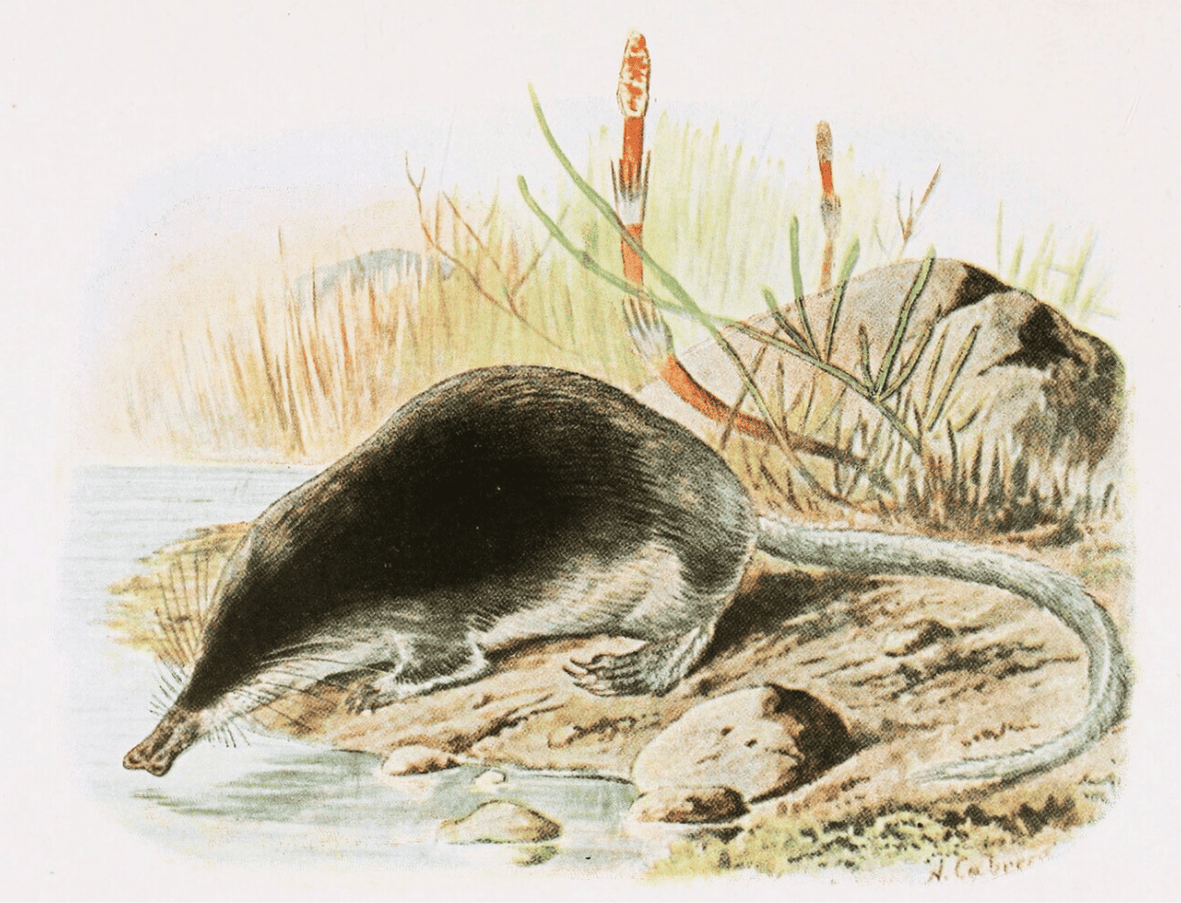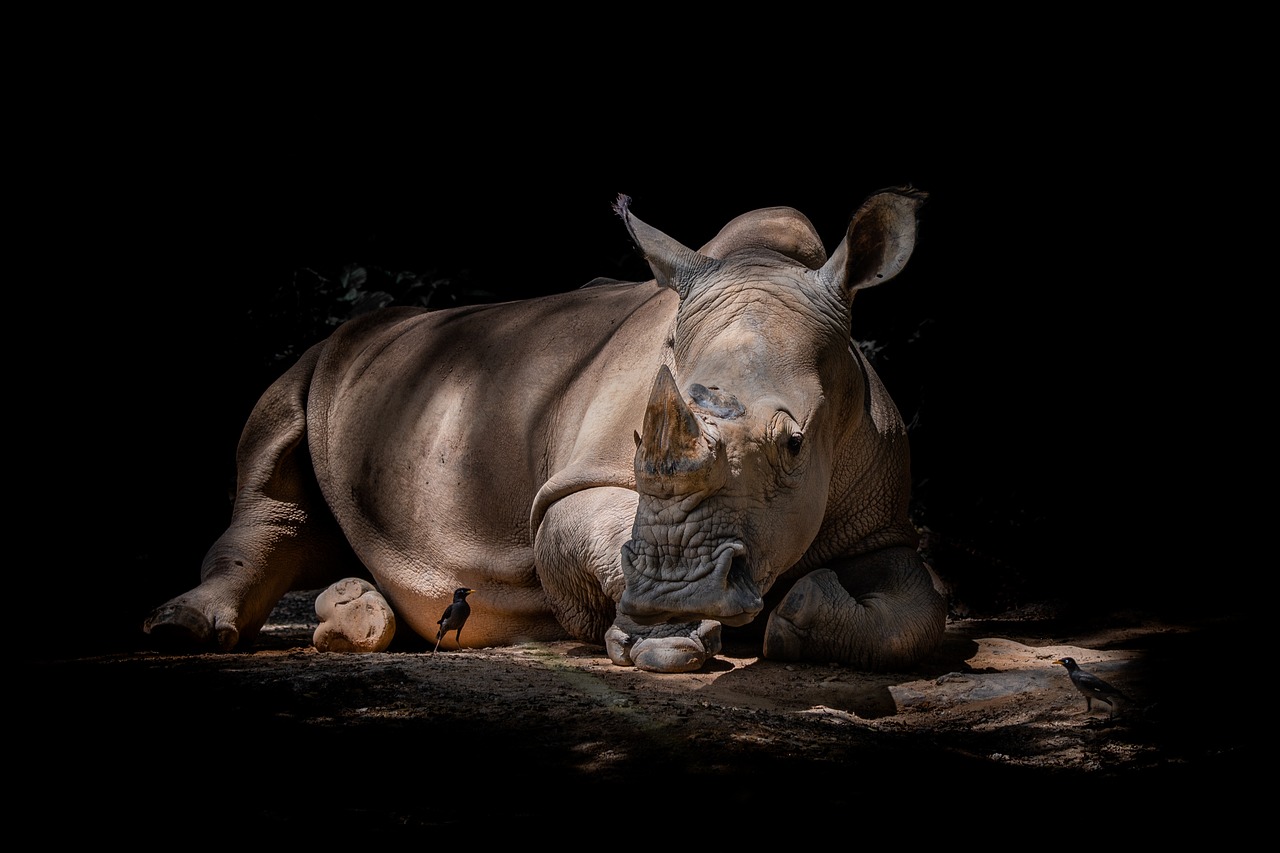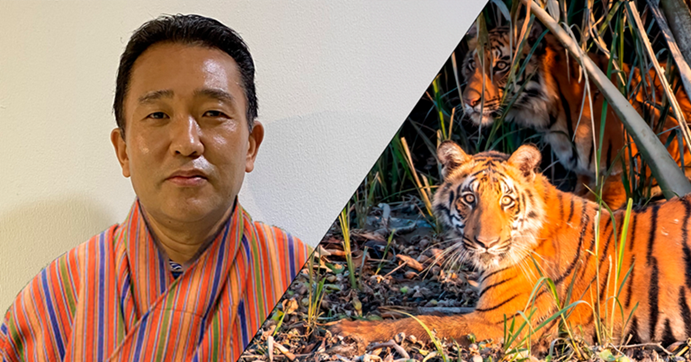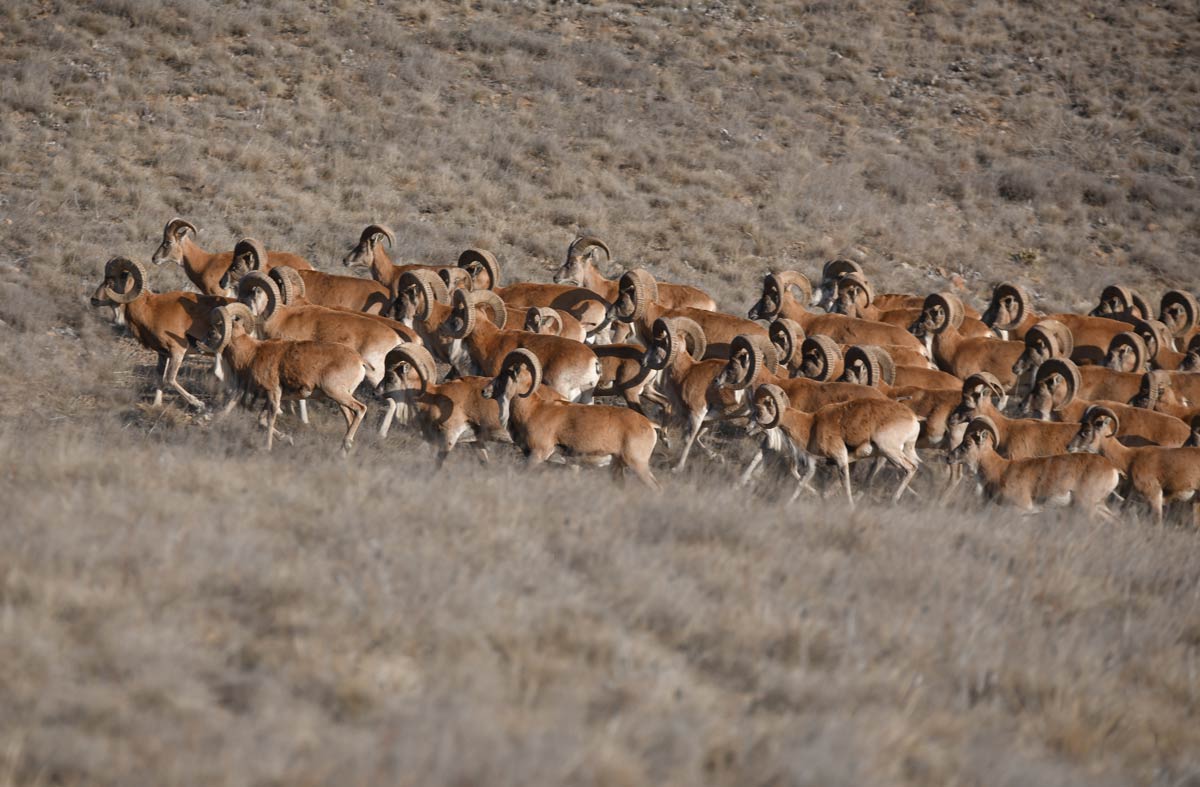Baku, Azerbaijan, 13 November 2024 (IUCN) – Forty-four per cent of reef-building coral species globally are at risk of extinction, the IUCN Red List of Threatened Species™ reveals following a global assessment announced today at the ongoing COP29 UN climate conference in Azerbaijan.
Related content
Primary tools and resources
Whitley Fund for Nature
Whitley Fund for Nature (WFN) is a fundraising and grant-giving nature conservation charity.
Three types of WFN grant enable grassroots conservationists to scale up their work and make a global impact. Whitley Awards provide £40,000 in project funding over one year as well as profile and training. Follow-on grants enable previous winners to expand effective projects, respond to changing needs, and collaborate with other conservationists, with grants worth up to £100,000 over two years. In 2020 WFN introduced a new strand of Continuation Funding for nature-based solutions that will help secure a sustainable future for wildlife, ecosystems and people. The Whitley Gold Award is worth £100,000.
CITES Virtual College
The CITES Virtual College was launched in 2011 and was developed to strengthen the understanding of CITES by Parties and others involved in its implementation and to increase awareness. During 2024, the Virtual College will be revamped with a new interface and a new set of online training courses. The online platform provides details of Training courses, Training materials, Identification guides, Non-detriment findings, References and tools.
IUCN Guidelines for Assessing Species’ Vulnerability to Climate Change
Several methods have been developed for climate change vulnerability assessment (CCVA) of species. There is no single ‘correct’ or established way to carry out CCVA of species and these guidelines aim to assist conservation practitioners to interpret and use the complex and often inconsistent CCVA literature. The guidelines indicate sensible and defensible approaches, in the context of the current state of knowledge and available resources.
The guidelines outline some of the terms commonly used in climate change vulnerability assessment (CCVA) and describe three dominant CCVA approaches, namely correlative (niche-based), mechanistic, and trait-based approaches. Advice is provided on setting clear, measurable objectives and selecting CCVA approaches and appropriate methods. Guidance on using and interpreting CCVA results includes suggestions on data sources and their use, working with knowledge gaps and uncertainty, approaches for use in challenging contexts, and incorporating indirect climate change impacts such as habitat transformation.
It is hoped that the guidelines will promote standardization of CCVA terminology and provide a useful resource for those wishing to carry out CCVA at species, site, or site-network scales.
The guidelines are structured to provide (i) background information on definitions and metrics associated with CCVA; (ii) a discussion on identifying CCVA objectives; (iii) core guidance on selecting and applying appropriate methods; (iv) sections on interpreting and communicating results; (v) using results in IUCN Red List assessments; (vi) ways to address the many sources of uncertainty in CCVAs. A final section explores future directions for CCVAs and research needs. The guidelines also highlight 10 case studies that provide worked examples of CCVAs covering the range of methods described.
Ramsar Wetland Sites of International Importance
A Ramsar site is a wetland designated to be of international importance under the Ramsar Convention (The Convention on Wetlands). The convention provides for national action and international cooperation on the conservation and sustainable use of wetlands. Sites are identified according to any one of nine criteria. The Ramsar Classification System for Wetland Types has been developed by the Ramsar Convention. There are currently more than 2,400 Ramsar Sites around the world, covering over 2.5 million km2. The Ramsar Sites Information Service (RSIS) provides online information on wetlands that have been designated as internationally important.
How to use
- For further information on the Convention visit: https://www.ramsar.org
- For an overview of the Ramsar Sites network or to obtain information on a specific Site, visit
- https://rsis.ramsar.org/
- The Administrative Authority of a Contracting Party can submit or update Ramsar Site information using the new online RIS by logging in or registering – instructions at: https://rsis.ramsar.org/sites/all/modules/custom/rsiswp_main/data/RSIS_Instructions_E.pdf
Responsible Business Alliance Practical Guide to Responsible Sourcing of Goods and Services
The Responsible Business Alliance (RBA) Practical Guide to Responsible Sourcing of Goods and Services outlines standard procurement steps to appropriate RBA tools and resources, to help give buyers confidence the products that they procure from RBA members are made in socially and environmentally responsible ways.
The IUCN Urban Alliance
The Urban Alliance is a diverse global coalition of international partners committed to bringing cities into balance with nature. Several resources are available including an IUCN briefing paper, the Urban Nature Indexes: methodological framework and key indicators, and the IUCN Urban Toolbox. This is a catalogue of IUCN knowledge products on urban biodiversity that provides guidance to subnational governments, municipalities, and urban professionals on nature-positive development in urban environments. The tools featured support assessment, planning, design, implementation, and monitoring.
How to use
- Information on The Urban Alliance can be accessed at: https://iucnurbanalliance.org
- The Briefing paper on Cities and Nature can be downloaded at: https://www.iucn.org/resources/issues-brief/cities-and-nature
- The Urban Nature Indexes: methodological framework and key indicators can be downloaded at: https://portals.iucn.org/library/node/50782
- The IUCN Urban Toolbox is available in English, French and Spanish at: https://iucnurbanalliance.org/iucn-urban-toolbox-released-in-english-french-and-spanish/
The Intergovernmental Panel on Climate Change (IPCC)
The IPCC is the United Nations body for assessing the science related to climate change. The objective of the IPCC is to provide governments at all levels with scientific information that they can use to develop climate policies. IPCC provides regular assessments of the scientific basis of climate change, its impacts and future risks, and options for adaptation and mitigation. IPCC reports are also a key input into international climate change negotiations.
An open and transparent review by experts and governments around the world is an essential part of the IPCC process to ensure an objective and complete assessment and to reflect a diverse range of views and expertise. Through its assessments, the IPCC identifies the strength of scientific agreement in different areas and indicates where further research is needed. The IPCC does not conduct its own research.
The IPCC has completed its Sixth Assessment cycle, during which it produced Assessment reports from its three Working Groups, three Special Reports, a Methodology Report, and the Synthesis report (SYR 6) which was finalized in March 2023.
IUCN Standard on Indigenous Peoples
The Standard represents IUCN’s policy objectives with respect to indigenous peoples. It contains eight policy objectives for projects undertaken or supported by IUCN to support indigenous peoples and promote their role in conservation and management of sustainable resources.
The purpose of this Standard is to ensure that IUCN projects anticipate and avoid negative impacts on indigenous peoples or to minimise and/or compensate for impacts; take all rights and needs of indigenous peoples fully into account in project planning and implementation; and ensure that their customs, cultural and spiritual values, and perspectives on the environment are included.
The Terra Viva Grants Directory
The Terra Viva Grants Directory is an online information service on funding opportunities for the developing world in (1) Agriculture, Fisheries, Forestry; (2) Biodiversity, Conservation, Wildlife; (3) Energy, Climate Change; (4) Water Resources; and (5) Cross-Cutting Subjects. The platform lists current grant opportunities and profiles of over 800 grant programs, including application deadlines by month, subject area, and form of grant support. Funding News is a blog of open calls for proposals that is updated regularly.
Basic access for project funding or scholarships is free resources. Full access requires a paid subscription.
Global Taxonomy Initiative
The Global Taxonomy Initiative (GTI) was established by the CBD to address the lack of taxonomic information and expertise available in many parts of the world, and thereby to improve decision-making in conservation, sustainable use, and equitable sharing of the benefits derived from genetic resources. The GTI was developed by governments under the Convention on Biological Diversity and is implemented by governments, non-government and international organizations, taxonomists, and institutions.
The GTI is specifically intended to support implementation of the work programmes of the Convention on its thematic and cross-cutting issues. The Guide to the GTI includes an introduction, the programme of work, and links to further information. The European GTI Toolkit is a comprehensive tool that covers GTI topics in further detail.
IUCN Principle on Gender Equality and Women Empowerment
This Gender Equality and Women’s Empowerment Policy reaffirms and further strengthens IUCN’s commitment to realising gender equality and women’s rights and empowerment and puts into place requirements for embedding a gender-responsive approach into its Programme and project portfolio. Another publication Gender equality for greener and bluer futures: why women’s leadership matters for realising environmental goals includes new IUCN data on the number of women leading environmental ministries, compared with previous data. It also highlights data on why gender equality and women’s empowerment are essential for global goals on achieving an inclusive and sustainable future.
Species Threat Abatement and Restoration (STAR) metric
The STAR metric assesses the potential of particular actions at a specific location to contribute to reduce species extinction risk / global targets for species. It measures the potential contribution of two kinds of action: threat abatement / reduction and habitat restoration using data on the distribution, threats, and extinction risk of threatened species contained in the IUCN Red List. It helps governments, the finance industry, investors, and companies to target their investments and activities to achieve conservation outcomes for threatened species. The STAR metric can be applied to any location. It is maintained under the authority of the IUCN Red List Committee.
One Health Joint Plan of Action (2022–2026)
The One Health Joint Plan of Action was launched by four partners – the Food and Agriculture Organization of the United Nations (FAO), the United Nations Environment Programme (UNEP), the World Health Organization (WHO), and the World Organisation for Animal Health (WOAH, founded as OIE). This initiative seeks to improve the health of humans, animals, plants, and the environment, while contributing to sustainable development. The One Health Joint Plan of Action was developed through a participatory process and provides a set of activities to strengthen collaboration, communication, capacity building, and coordination across all sectors responsible for addressing health concerns at the human-animal-plant-environment interface.
International Principles & Standards for the Practice of Ecological Restoration
These principles were developed by the FAO, IUCN Commission on Ecosystem Management, and the Society for Ecological Restoration to support implementation of the UN Decade on Ecosystem Restoration. The second edition of was produced by the Society Ecological Restoration in 2019. These Standards provide a guide for everyone involved in restoring degraded ecosystems — whether terrestrial, freshwater, coastal, or marine. They present a robust framework for restoration projects including effective design and implementation. The Standards support development of ecological restoration plans, contracts, consent conditions, and monitoring and auditing criteria. The Standards establish eight principles that underpin ecological restoration and recommend performance measures for restoration activities for industries, communities, and governments to consider. The second edition also includes an expanded glossary of restoration terminology.
Conservation Leadership Programme (CLP)
CLP is an international capacity building programme that supports young conservationists in to undertake applied biodiversity projects. Each year, CLP calls for project applications in low- and middle-income countries and some high-income islands in the Caribbean and Pacific. Funding is awarded to teams of early-career conservationists to conduct scientific research, promote pro-conservation attitudes, and deliver tangible results to conserve and manage biodiversity.
There are three grant levels. Starting with a Future Conservationist Award, teams are supported to undertake small-scale research and awareness-raising projects. Then through Follow-up and Leadership awards, teams can implement larger projects over a longer period of time and implement deliver practical solutions while learning more complex decision-making, communication, and leadership skills. As part of the award, winning teams can access expertise from within the partner organisations and via our global Alumni Network, which includes past award-winners.
Programme staff members are also available to advise on project implementation, including guidance required during the planning and team training stages. Each year CLP runs a two-week Conservation Management & Leadership Course for recent award winners. CLP is a partnership of three leading biodiversity conservation organisations, BirdLife International, Fauna & Flora International, and Wildlife Conservation Society.
The Collaborative Partnership on Sustainable Wildlife Management (CPW)
CPW is a voluntary partnership of several international organizations that have mandates and programmes for the sustainable use and conservation of biodiversity. The CPW was Current members are the Convention on Biological Diversity, the Center for International Forestry Research, CITES, CMS, FAO, the International Council for Game and Wildlife Conservation (CIC), the International Indigenous Forum on Biodiversity (IIFB), the International Trade Centre (ITC), IUCN, the International Union of Forest Research Organizations, TRAFFIC, and UNEP. The goal of CPW is to increase cooperation between partners and other stakeholders and promote the conservation of terrestrial vertebrate wildlife through sustainable management. Its main working areas are the provision of knowledge and support for issues related to wildlife, food security and sustainable livelihoods as well as on solving human–wildlife conflict and illegal and unsustainable hunting.
The CBD Ecosystem Approach (EA)
The Convention on Biological Diversity’s Ecosystem Approach is a strategy for the integrated management of land, water, and living resources to promote conservation and sustainable use in an equitable way. It is the primary framework for such action under the CBD and it contains 12 core principles. The Ecosystem Approach Sourcebook contains a Beginner’s Guide, Advanced Guide, Tools and resources, a Case Study Database, and Operational guidance for applying the 12 principles of the Ecosystem Approach.
How to use
To access the EA Sourcebook and operational guides: https://www.cbd.int/ecosystem/
To download and subscribe to the CBD Ecosystem Newsletter: https://www.cbd.int/ecosystem/ea-newsletters/
IPBES Thematic Assessment Report on Invasive Alien Species and their Control
The IPBES Thematic Assessment of Invasive Alien Species and their Control was adopted in September 2023 and synthesizes information from over 13,000 references on IAS into a comprehensive scientific assessment and a concise summary document for policy makers. The assessment assesses the current status and trends of invasive alien species, their impacts, drivers, management, and policy options to address the challenges they pose. It results from four years of work by experts from 49 countries.
International Whaling Commission (IWC) programmes on ocean noise
Anthropogenic ocean noise is identified as one of the priority threats in the Strategic Plan of the IWC Conservation Committee. In 2018, the IWC agreed a Resolution that recognised the increasing concern over ocean noise, and clarified next steps to better understand and manage the threat. In 2022 the IWC endorsed a Workplan on Anthropogenic Ocean Noise. The Scientific Committee is also undertaking research on the impact of noise on cetaceans, and the effectiveness of different approaches to reduce exposure.
The Intergovernmental Panel on Climate Change (IPCC)
The IPCC is the United Nations body for assessing the science related to climate change. The objective of the IPCC is to provide governments at all levels with scientific information that they can use to develop climate policies. IPCC provides regular assessments of the scientific basis of climate change, its impacts and future risks, and options for adaptation and mitigation. IPCC reports are also a key input into international climate change negotiations.
An open and transparent review by experts and governments around the world is an essential part of the IPCC process to ensure an objective and complete assessment and to reflect a diverse range of views and expertise. Through its assessments, the IPCC identifies the strength of scientific agreement in different areas and indicates where further research is needed. The IPCC does not conduct its own research.
The IPCC has completed its Sixth Assessment cycle, during which it produced Assessment reports from its three Working Groups, three Special Reports, a Methodology Report, and the Synthesis report (SYR 6) which was finalized in March 2023.
IUCN Guidelines on Reintroductions and other Conservation Translocations
These Guidelines define terms and set out guidance on the justification, design, and implementation of any reintroduction or conservation translocation, including (i) reinforcement and reintroduction within a species’ indigenous range, and (ii) conservation introductions, comprising assisted colonisation and ecological replacement, outside a species’ indigenous range. The Guidelines focus on conservation translocations, namely a translocation that yields quantifiable conservation benefit. For this purpose, the beneficiaries should be the population or the ecosystem of the translocated species. Translocation needs rigorous justification. Feasibility assessment should include a balance of the conservation benefits against the costs and risks of both the translocation and alternative conservation actions. There are multiple risks in a translocation, affecting the focal species, their associated communities and ecosystem functions in both source and destination areas; there are also risks around human concerns. Any proposed translocation should have a comprehensive risk assessment.
How to use
- To download the guidelines: https://portals.iucn.org/library/node/10386
- To seek advice on translocations, and for details of training courses, contact the IUCN SSC Conservation Translocation Specialist Group at: https://iucn-ctsg.org/
- A comprehensive set of reintroduction case studies covering a wide range of flora and fauna is included in a series of books Reintroduction Perspectives. These are available to download at: https://iucn-ctsg.org/resources/
Global Invasive Alien Species Information Partnership
Global Invasive Alien Species Information Partnership (GIASI Partnership) supports CBD Parties who are committed to implementing the various decisions under the CBD pertaining to the prevention, eradication, and control of invasive alien species.
Tracking Economic Instruments and Finance for Biodiversity
The OECD Environmental Policy Committee, through its unique database of Policy Instruments for the Environment (PINE), collects quantitative and qualitative information on policy instruments from more than 120 countries worldwide. This brochure presents statistics on the biodiversity-relevant economic instruments and the finance they mobilise, based on
currently available data. The brochure also includes information on payments for ecosystem services (PES) and on biodiversity offsets, two other types of economic instruments that provide incentives for biodiversity conservation and its sustainable use.


